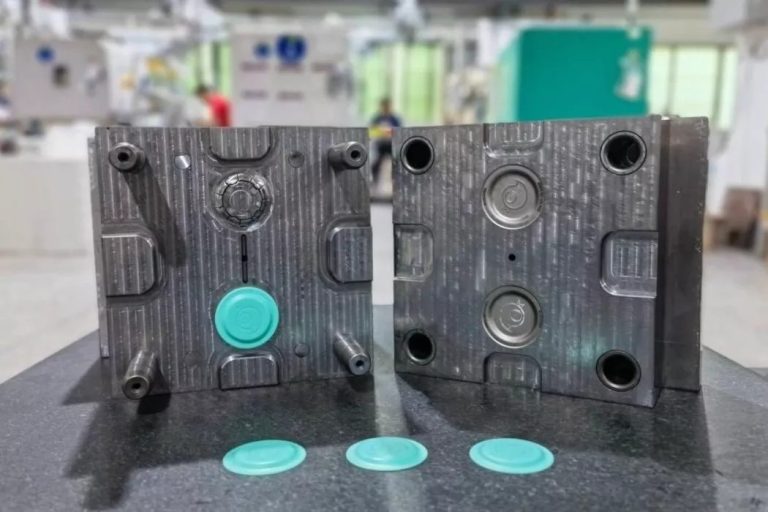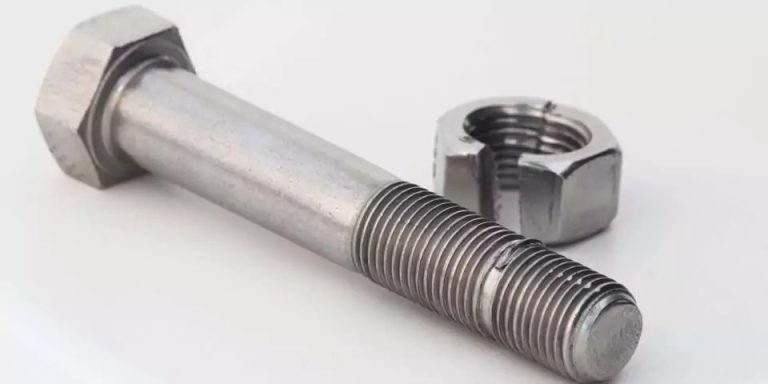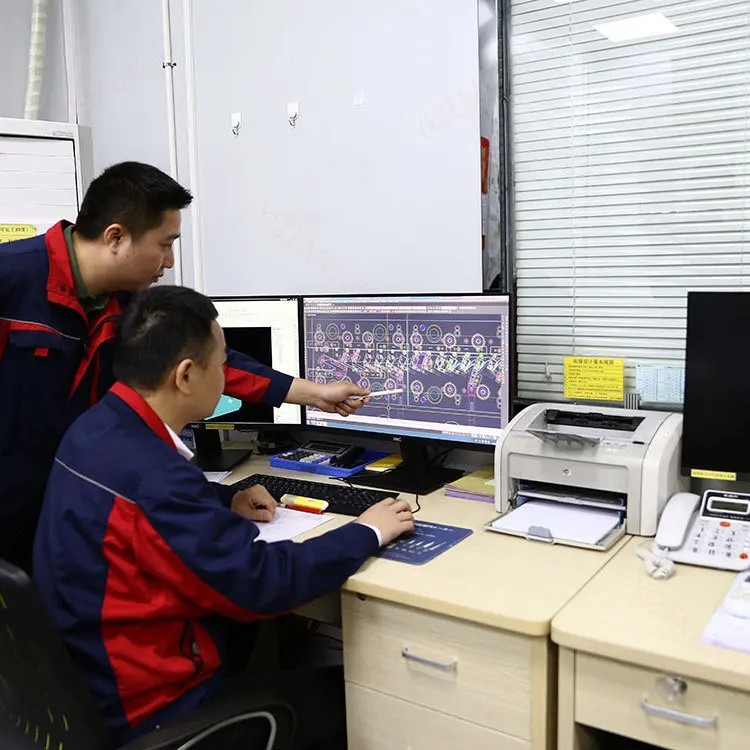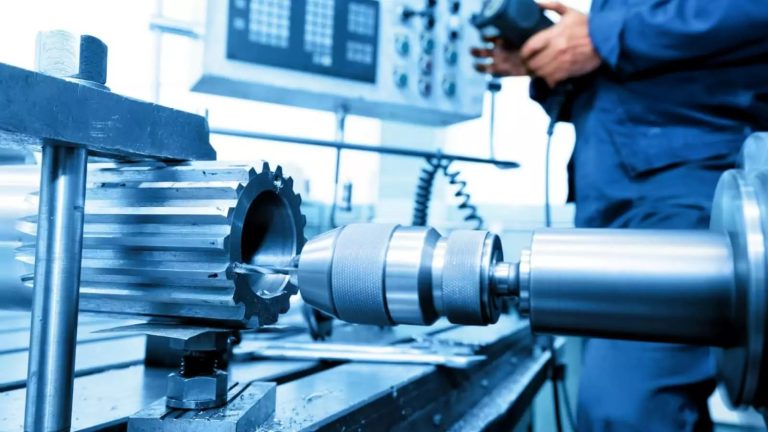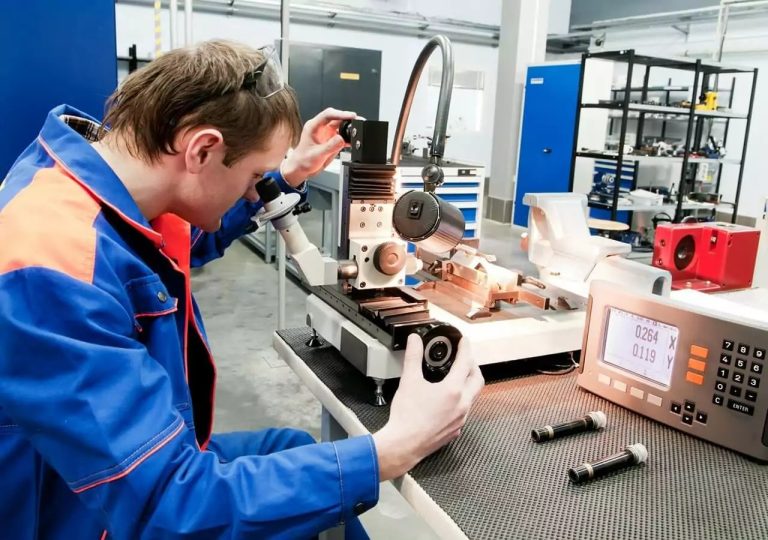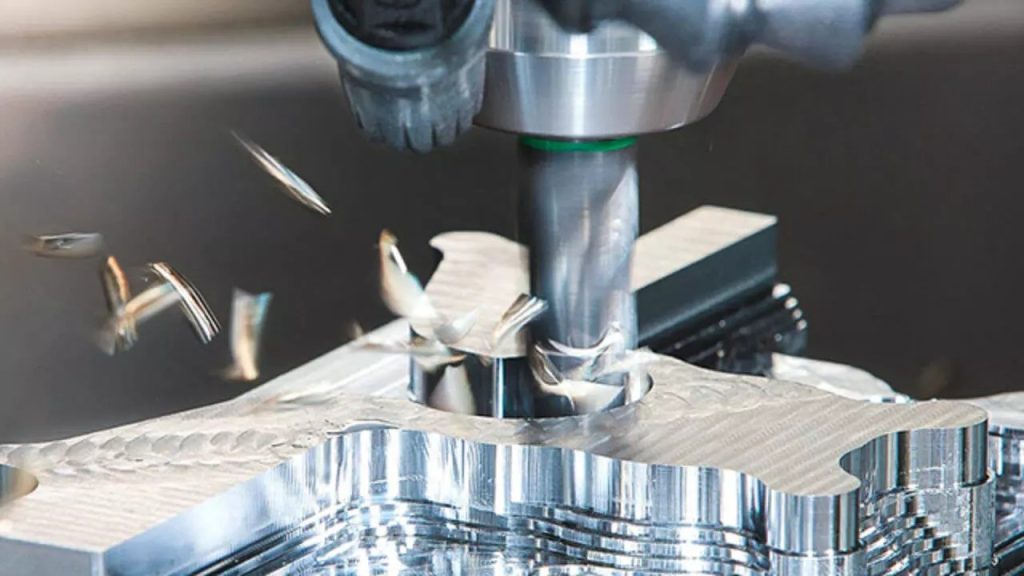
CNC routing stands as a pivotal advancement in manufacturing, offering unparalleled precision and versatility. This article delves into the essence, history, workings, and impact of CNC routing, a cornerstone in modern fabrication techniques.
Table of Contents
What is CNC Routing?

At its core, CNC routing is a type of CNC machining process that utilizes computer numerical control to direct router tools across material surfaces.
This process intricately cuts, carves, and shapes materials with computer precision, transforming digital designs into tangible objects.
Unlike traditional manual operations, CNC routing brings forth efficiency and accuracy in complex tasks, making it indispensable in various manufacturing realms.
Short History of CNC Routing Machines
The genesis of CNC routing traces back to the post-World War II era, marked by technological strides aiming at enhancing manufacturing efficiency. John T. Parsons and Frank L. Stulen, in collaboration with the Massachusetts Institute of Technology (MIT), are credited with pioneering the first numerical control system in the late 1940s.
This innovation laid the groundwork for the subsequent development of CNC routing, evolving from rudimentary punched-tape models to sophisticated, computer-controlled marvels.
A few years later, Richard J. Kegg played a crucial role in advancing the technology and making it more accessible to various industries. Kegg’s work likely contributed to the evolution and widespread adoption of CNC routing machines in manufacturing and fabrication processes.
How Does a CNC Routing Work?
At the heart of CNC routing operation lies the ability to convert digital blueprints into physical objects with meticulous accuracy and efficiency. This process commences with the creation of a design file on a computer. Utilizing CAD (Computer-Aided Design) software, you can craft intricate designs that a CNC router can interpret.
Following the design phase, CAM (Computer-Aided Manufacturing) software translates this design into a language the machine understands—commonly G-code. This code instructs the router on precisely how to move, cut, and shape the material, whether it be wood, metal, plastic, or foam.
The beauty of CNC routing lies in its versatility and precision. It enables the production of everything from simple cutouts to complex three-dimensional shapes.
By automating the cutting process, CNC routers eliminate human error, enhancing both the quality and speed of production. This technology is a cornerstone in industries where precision is paramount, including furniture making, sign making, aerospace, and automotive.
What Are the Main Components of a CNC Router?
Understanding a CNC router’s anatomy is crucial to comprehending its functionality and the sophistication behind its operations. Each component plays a pivotal role, contributing to the machine’s overall performance and versatility.
Frame
The frame is the CNC router’s backbone, providing structural support for the entire machine. It must be robust and stable to withstand the forces exerted during the routing process. The integrity of the frame directly influences the precision of cuts, as any flexing or vibration can lead to inaccuracies.
Motors
Motors are the muscles of a CNC router, driving the movement along the X, Y, and Z axes. There are generally two types of motors used: stepper and servo. Stepper motors move in predetermined steps, offering precise control over position without feedback. Servo motors, equipped with feedback systems, adjust for any discrepancies between the expected and actual positions, offering even greater accuracy and efficiency.
CNC Controller
The CNC controller is the brain of the operation. This computerized control panel interprets the G-code from the CAM software and translates it into electrical signals that dictate the motors’ movements. It’s the interface where you input commands and monitor the routing process, ensuring the router executes the design with precision.
Gantry
The gantry is a bridge-like structure that spans the cutting table. It houses the spindle or router and moves along the X-axis (left to right), with the ability to support movement in the Y-axis (front to back) for certain designs. Its stability and smooth movement are crucial for achieving clean cuts and intricate details.
Table/Bed
The table, or bed, is where you secure the material to be cut. It’s designed to offer a flat, stable surface that can hold various materials in place, either through clamps, vacuum hold-downs, or other mechanisms. The table’s design affects the types of materials you can work with and the precision of the cuts.
Spindle/Router
This component is the cutting tool of the CNC router, responsible for carving, engraving, and shaping the material. Spindles and routers vary in power and speed, allowing for a wide range of cutting capabilities, from delicate engraving to deep, aggressive cuts. The choice between a spindle and a handheld router often depends on the specific requirements of the project, including the material’s hardness and the intricacy of the design.
Ways
“Ways” refer to the linear bearings or guides that facilitate the smooth and accurate movement of the machine’s moving parts along the axes. High-quality ways reduce friction and wear, ensuring long-term precision and reliability.
Axis Drive
The axis drive mechanism, including systems like rack and pinion or ball screws, converts the rotational movement of the motors into linear motion. This movement is what drives the gantry and spindle/router across the material. The type of drive system impacts the machine’s speed, accuracy, and ability to handle different materials.
What are the Stages of the CNC Routing Process?
CNC routing, integral to industries from aerospace to custom furniture, follows a meticulous sequence of stages.
Each stage is crucial, building upon the last to ensure the final product meets exact specifications with high-quality finishes.
Let’s navigate through these stages, understanding their importance in the CNC routing journey.
- Design Creation The journey begins with design creation, the conceptual blueprint of the final product. Utilizing CAD software, designers draft detailed models, laying the foundation for what will eventually materialize from the CNC router. This stage is pivotal; the precision and creativity employed here directly influence the feasibility and quality of the finished piece. Whether for complex machinery components or intricate art pieces, the design stage encapsulates the envisioned outcome in digital form.
- Conversion to CNC Language Following design, the next critical phase is converting the CAD model into a language the CNC machine comprehends—G-code. CAM software programs come into play here, translating design intricacies into executable machine instructions. This conversion is more than mere translation; it’s about ensuring the CNC router can accurately follow the design paths, considering factors like tool paths, cutting depths, and material properties. This stage bridges the gap between digital designs and physical production, underscoring the importance of precision in CNC operations.
- Material Selection and Preparation Selecting the appropriate material is not merely about aesthetics; it’s about compatibility with the design’s functional requirements and the CNC router’s capabilities. Materials range from softwoods and hardwoods to metals and plastics, each chosen based on the project’s needs for durability, finish, and structural integrity. Preparation involves sizing the material correctly and securing it to the CNC table, ensuring stability and accuracy during routing. This stage sets the stage for the transformation, ensuring the chosen material is primed for the intricate dance with the router.
- Machine Setup Before the magic happens, setting up the CNC router is paramount. This includes loading the correct tools, such as drill bits and cutters, and configuring settings like speed, feed rate, and tool paths based on the material and design specifics. Proper setup is crucial for operational efficiency and precision, impacting everything from cut quality to tool longevity. This stage is about aligning the machine’s capabilities with the project’s demands, ensuring it’s ready to execute the design flawlessly.
- CNC Routing Process With preparations complete, the CNC routing process begins. The machine springs to life, cutting and carving as per the G-code directives. This stage is where the digital design materializes, with the router meticulously following the programmed paths to create the physical object. The precision of CNC routing shines here, showcasing the ability to produce complex shapes and fine details far beyond manual capabilities.
- Post-Processing Once the router has done its part, the post-processing stage addresses any necessary finishing touches. This might include sanding, painting, or assembly, transforming the routed piece into the final product. Post-processing is critical for aesthetics and functionality, ensuring the piece not only matches the design intent but is also ready for its intended use.
- Quality Control The final stage, quality control, is about ensuring the finished product meets all specifications and quality standards. This involves inspecting the piece for accuracy, dimensions, and finish, affirming that the entire CNC routing process has adhered to the highest standards. Quality control is the final checkpoint, a testament to the process’s precision, and a guarantee of the product’s readiness for delivery or use.
What Different Types of CNC Routers Are Out There?

As you explore the world of CNC routing, you’ll find an array of machines each designed to meet specific needs, from industrial production to hobbyist projects.
Let’s delve into the different types of CNC routers available, highlighting their main applications, unique characteristics, and capabilities.
Industrial CNC Routers
Industrial CNC routers are the powerhouses of CNC technology, designed for heavy-duty use in manufacturing environments. These routers are built with robustness and durability in mind, capable of handling large volumes of work with speed and precision.
They often feature advanced automation capabilities, including ATC (Automatic Tool Changer) systems and sophisticated software interfaces for managing complex tasks. Main applications include cutting, engraving, and shaping a wide range of materials for industries such as aerospace, automotive, and furniture manufacturing.
Their unique capability lies in their high production capacity and precision, making them indispensable for large-scale operations.
Desktop CNC Routers
Desktop CNC routers, as the name suggests, are compact versions designed to fit on a desk or small workshop space. These routers cater to smaller projects, prototyping, and educational purposes, providing a cost-effective solution for those beginning their journey into CNC routing or with limited space. Despite their size, desktop CNC routers offer impressive precision and versatility, suitable for working with wood, plastics, and soft metals. They are particularly favored by designers, hobbyists, and small businesses for their ease of use and maintenance.
Hobby CNC Routers
Hobby CNC routers are tailored for enthusiasts and DIYers who delve into CNC routing for personal projects, crafts, or small-scale production. These machines often balance between affordability and functionality, offering a gateway into CNC routing without the investment required for industrial-grade equipment.
Hobby CNC routers are versatile enough to handle a variety of materials, including wood, plastics, and foams, making them perfect for crafting unique items, home decor, and prototypes.
3-Axis CNC Routers
3-Axis CNC routers represent the most common type of CNC router, capable of moving in three directions: X (left to right), Y (front to back), and Z (up and down). This versatility allows for a wide range of cutting, drilling, and milling applications across flat surfaces.
The simplicity and efficiency of 3-axis CNC routers make them a popular choice for both beginners and professionals, applicable in creating signs, furniture, and other intricate designs on a flat plane.
4-Axis CNC Routers
Expanding on the capabilities of 3-axis machines, 4-Axis CNC routers introduce an additional axis of rotation, allowing the workpiece to be rotated along the X-axis. This added flexibility enables more complex shapes and designs, such as sculptures or parts that require machining on several sides.
4-Axis CNC routers are particularly useful in industries where precision and multidimensional cutting are essential, offering the ability to create more complex geometries without repositioning the workpiece manually.
5-Axis CNC Routers
5-Axis CNC routers are at the forefront of CNC routing technology, providing movement along five different axes simultaneously.
This capability allows for cutting complex shapes and undercuts, as well as achieving smoother surface finishes. 5-Axis machines are ideal for advanced manufacturing applications requiring intricate design work, such as aerospace components, architectural elements, and high-precision parts.
Their unique capability to approach the workpiece from virtually any direction opens up limitless possibilities for innovation and design.
ATC (Automatic Tool Changer) CNC Routers
ATC CNC routers are equipped with an automatic tool changing mechanism, enabling the machine to swap out tools during the routing process without manual intervention. This feature significantly enhances productivity and efficiency, particularly for jobs requiring multiple tool types.
ATC routers find their main applications in production environments where time is of the essence, and precision is paramount.
Their unique capability to minimize downtime and human error makes them a valuable asset for high-volume, complex projects.
Nested-Based CNC Routers
Nested-Based CNC routers are designed to optimize material usage and efficiency by arranging patterns to be cut in a way that minimizes waste. This type of CNC router is particularly suited for industries involved in furniture production, cabinetry, and sheet metal fabrication, where maximizing material yield is critical.
Their unique capability to combine software-driven optimization with precision cutting ensures that nested-based CNC routers offer both economic and environmental benefits, reducing waste while maintaining high production standards.
What are the Different CNC Routing Operations?
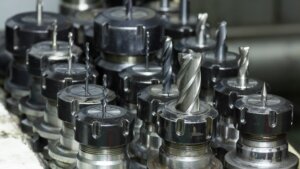
CNC routing operations encompass a broad spectrum of processes, each designed to manipulate material in a way that meets specific design and manufacturing needs.
Below, you will learn more about the various operations performed by CNC routers and how they are utilized across different projects.
Engraving
Engraving is a precision operation where a CNC router carves intricate patterns, letters, or images into the surface of a material. Typically, machines equipped with fine cutting tools or spindles are used for this task to achieve the necessary detail and depth. Engraving is widely used for:
- Creating detailed artwork on wood, metal, or acrylic surfaces.
- Producing signage with intricate logos or typography.
- Personalizing items with names, dates, or messages.
- Manufacturing industrial labels and control panels with precise, durable markings.
Profiling
Profiling involves cutting out shapes from a material along the outline, producing parts or features with precise dimensions. Machines with robust drive systems and versatile cutting tools are typically used for profiling. This operation is crucial for:
- Fabricating components with specific contours or shapes.
- Trimming edges of parts to achieve smooth, finished boundaries.
- Creating decorative panels or architectural elements with complex outlines.
Pocketing
Pocketing is the process of removing material from a workpiece’s surface to create cavities or recesses of specified depths. CNC routers capable of adjusting cutting depths accurately are used for pocketing, serving purposes such as:
- Creating recesses for inlays or components fitting.
- Machining slots or channels within a workpiece.
- Forming cavities in molds or dies for manufacturing applications.
Drilling
Drilling with a CNC router involves creating cylindrical holes in a material, ranging from simple, straight bores to complex, angled entry and exit points. Machines with precise z-axis control are ideal for this operation, which is utilized for:
- Preparing parts for assembly with screws, bolts, or dowels.
- Creating ventilation holes or channels within components.
- Forming holes for wiring or piping in electrical or plumbing applications
3D Carving
3D carving takes CNC routing into three dimensions, sculpting materials to create shapes that have depth, contours, and intricate details. This operation requires routers with advanced control over all three axes and is used for:
- Producing statues, sculptures, or decorative elements with complex geometries.
- Manufacturing molds for casting or thermoforming.
- Creating prototypes or models for testing or presentation purposes.
The ability to carve in three dimensions opens up endless possibilities for design and manufacturing, allowing for the creation of objects with intricate details and shapes.
Reaming
Reaming is a finishing operation where a CNC router fine-tunes hole sizes and improves their surface finish. Machines with high precision and stability are used to perform reaming, ensuring:
- Holes have precise diameters and are suitable for tight-tolerance fittings.
- The surface inside the holes is smooth and free of burrs.
- Components fit together with exact alignment during assembly.
Reaming enhances the quality and functionality of parts, particularly in applications where precision fitting is critical.
Threading
Threading involves creating a helical structure along the surface of a material, typically used for screws, bolts, and fasteners. CNC routers, equipped with specialized tool heads, perform threading by synchronizing the rotation of the spindle with the linear motion of the material or the tool itself. This operation requires precision control, achievable through advanced CNC systems that accurately execute the programmed tool paths.
- Precision Fastening: Ensuring components fit together with exacting tolerance.
- Custom Thread Patterns: Creating unique thread designs for specialized applications.
- Automated Production: Streamlining the manufacturing process for efficiency and consistency.
- Material Versatility: Adapting to various materials, from metals to plastics, without compromising on accuracy.
Ramping
Ramping refers to the technique of gradually entering or exiting the material surface at an angle, rather than a perpendicular plunge. This method reduces the load on the tool, minimizing wear and potential breakage. CNC routers perform ramping with controlled movements, guided by CAM software programs, to achieve smooth transitions and precise depth control.
- Enhanced Tool Life: Reducing the impact force extends the durability of the cutting tool.
- Improved Surface Finish: Achieving smoother surfaces by minimizing tool marks.
- Versatile Cutting Strategies: Adapting to complex geometries and hard-to-reach areas.
- Efficient Material Removal: Optimizing the cutting process for faster production without sacrificing quality.
Slotting
Slotting involves cutting narrow grooves or slots in a material, a common requirement in various manufacturing tasks. CNC routers, with their precision control over the X, Y, and Z axes, excel at slotting operations. The use of high-speed spindle motors and appropriate cutting tools allows for efficient material removal and high-quality finishes.
- Component Assembly: Creating slots for interlocking parts in furniture and structural designs.
- Ventilation Features: Incorporating slots for airflow in electronic enclosures and automotive components.
- Decorative Detailing: Adding aesthetic elements to products through intricate slot patterns.
- Functional Grooves: Designing slots for wiring, piping, and other functional requirements in projects.
Facing
Facing is the process of creating a flat surface on a workpiece, typically at the beginning of the manufacturing process. CNC routers achieve facing by moving a cutter across the material’s surface, ensuring an even and smooth finish. This operation is crucial for preparing materials for further machining or for achieving desired aesthetic qualities.
- Surface Preparation: Ensuring materials are perfectly flat before undergoing additional machining processes.
- Thickness Calibration: Achieving precise material thickness for quality control and uniformity.
- Aesthetic Improvement: Enhancing the visual appeal of the material surface for final products.
- Base Creation: Forming a stable base for complex machining tasks, improving overall accuracy.
Chamfering
Chamfering involves removing a small portion of material to create a beveled edge, typically for aesthetic or functional purposes such as easing assembly. CNC routers, with their precise control and adaptability, are ideal for chamfering operations. The process can be tailored to various angles and depths, depending on the requirements of the project.
- Edge Finishing: Smoothing sharp edges for safety, handling, and visual appeal.
- Assembly Readiness: Preparing components for easier and more secure assembly.
- Stress Reduction: Minimizing stress concentrations in materials prone to cracking or breaking.
- Decorative Accents: Adding distinctive design elements to products for enhanced aesthetic value.
Parting/Cutting Off
Parting or cutting off is the process of separating a part from the rest of the material, often used in producing individual components from a larger stock.
CNC routers execute this operation with high precision, ensuring clean and accurate cuts. The operation is supported by the router’s ability to manage intricate tool paths and apply consistent force along the cut.
- Component Separation: Efficiently producing individual parts from larger material pieces.
- Material Conservation: Minimizing waste by maximizing the number of parts cut from a single material piece.
- Precision Cutting: Achieving exact dimensions for components, crucial for assembly and functionality.
- Versatility in Materials: Adapting the cutting process to a wide range of materials, from wood to composites.
Inlaying
Inlaying involves embedding a material within another to create decorative patterns or to add strength to an object.
CNC routers, with their precise control over depth and positioning, are perfectly suited for intricate inlay work. This operation showcases the router’s ability to handle delicate tasks, producing stunning results that are both functional and visually appealing.
- Decorative Designs: Creating complex patterns and artwork for furniture, musical instruments, and other decorative items.
- Functional Reinforcement: Strengthening objects by adding materials with specific properties in key areas.
- Custom Branding: Incorporating logos or branding elements directly into products.
- Material Diversity: Combining different materials for unique aesthetic effects or to achieve specific performance characteristics.
What are Essential Tools for CNC Routing: A Comprehensive Guide?
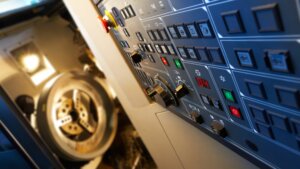
Whether you’re sculpting a masterpiece from wood or engineering a complex component from metal, the tools you use can make all the difference.
We walk you through the essential tools required for CNC routing, ensuring you’re well-equipped to confidently tackle any project.
Cutting Tools
At the heart of CNC routing are the cutting tools, the champions of material transformation. These tools are not just bits of metal but the sculptors of your creative vision. Let’s delve into the varieties and their specific applications.
End Mills
End mills are the workhorses of the CNC world, versatile tools capable of performing a myriad of tasks such as drilling, slotting, and contouring. They come in various shapes and sizes, each designed for specific types of cuts, from the intricate details of a delicate piece to the robust cuts on tougher materials.
Ball Nose Cutters
Ball nose cutters, with their distinctive rounded tips, are ideal for 3D contouring and complex shapes. They create smooth finishes on the workpiece, perfect for sculpting and mold making. Their unique shape allows for precision detailing in corners and tight spaces where traditional end mills might not reach.
V-Bits
V-bits are your go-to for engraving and fine detailing. Their sharp angles are perfect for creating crisp, clean lines in a variety of depths, making them indispensable for intricate designs and lettering. Whether you’re carving a sign or adding decorative details, V-bits offer unmatched precision.
Straight Cut Bits
Straight cut bits are essential for making straight cuts and slots. They excel in tasks that require deep, straight cuts with minimal fuss. Ideal for partitioning materials or cutting out shapes, these bits are a staple in any CNC toolkit.
Spiral Bits
Spiral bits, with their helical design, are engineered for smooth, efficient cutting. They efficiently remove material, reducing heat and preventing chip buildup. Available in upward or downward spirals, they cater to different material types and cutting needs.
Compression Bits
Compression bits are the solution to fraying and splintering, especially in laminated materials. They combine the benefits of both upward and downward spirals, ensuring a clean finish on both sides of the cut. They’re perfect for cutting plywood, laminates, and veneers.
Specialty Bits
Specialty bits, as the name suggests, are designed for specific applications. From engraving bits for detailed work to surfacing bits for leveling the bed, these tools address unique challenges in CNC routing, ensuring you always have the right tool for the job.
Work Holding Tools:
Securing your material is just as important as the cutting itself. Proper work holding ensures accuracy and safety, preventing material movement during the routing process.
Clamps
Clamps are the simplest yet most versatile holding tools. They come in various sizes and strengths, suitable for securing different materials and shapes. Always choose clamps that offer sufficient pressure without damaging the material.
Vacuum Hold-down Systems
Vacuum hold-down systems provide a secure, uniform hold over the entire workpiece, ideal for delicate or irregularly shaped materials. They’re particularly useful for high-precision work where clamping is not feasible.
T-Slot Tables
T-slot tables offer flexibility in setup, allowing you to configure clamps and fixtures precisely. They’re ideal for repetitive tasks, where setup time can be significantly reduced.
Vices
Vices provide a strong, stable hold for smaller workpieces. They’re particularly useful for metalworking and other materials that require substantial force during machining.
Measurement and Setup Tools
Accuracy in CNC routing begins long before the first cut. Measurement and setup tools ensure that your material is correctly positioned and your machine is precisely calibrated.
Calipers
Calipers are indispensable for measuring material thickness, ensuring your cuts are accurate down to the last millimeter. They’re essential for quality control, verifying that your workpiece meets the specified dimensions.
Edge Finders
Edge finders help in accurately locating the edges of the workpiece, crucial for setting the origin point for your cuts. They ensure that your machine knows exactly where to start, guaranteeing precision from the first pass.
Dial Indicators
Dial indicators are used for calibrating machines and checking for runout on the spindle. They help maintain the CNC router’s accuracy, ensuring consistent performance over time.
Tool Length Sensors
Tool length sensors automate the process of setting tool length offsets, saving time and reducing the chance of errors. They ensure that each tool is correctly calibrated for depth, crucial for multi-tool operations.
What Materials Are Suitable for CNC Routing?

At its core, the success of a CNC project hinges on selecting the right material. This section explores the spectrum of materials suitable for CNC routing, each offering unique properties and applications.
Wood-Based Materials
Wood, with its natural beauty and workability, is a favorite among CNC enthusiasts and professionals. CNC routers can sculpt, carve, and engrave wood with astonishing detail, breathing life into raw lumber.
- Hardwoods like oak, maple, and walnut are prized for their durability and grain patterns, ideal for furniture and decorative items.
- Softwoods such as pine and cedar offer a softer option, suitable for carving intricate designs with less wear on tools.
- Plywood and MDF (Medium Density Fiberboard) provide a stable and uniform material, essential for precision parts and templates.
How thick of wood can a CNC router cut?
The cutting capacity of a CNC router varies by machine, but many are capable of handling wood up to 3 inches thick. Advanced models, equipped with powerful spindles and appropriate cutting tools, can tackle even thicker slabs, offering flexibility for a range of projects.
Plastics
Plastics’ adaptability and strength make them a popular choice for CNC routing. From prototypes to finished products, the applications are nearly limitless.
- Acrylic shines for its clarity and smooth finish, perfect for signs and decorative elements.
- PVC (Polyvinyl Chloride) offers a durable and chemical-resistant option, suited for industrial components.
- ABS (Acrylonitrile Butadiene Styrene) is known for its toughness, a go-to for functional parts and enclosures.
Composite Materials
Composites, such as carbon fiber and fiberglass, provide strength and lightweight characteristics unmatched by traditional materials. These are often used in aerospace, automotive, and sporting goods for their high performance.
Non-Ferrous Metals
CNC routers can also process non-ferrous metals, expanding their utility beyond wood and plastic.
- Aluminum combines lightweight with strength, ideal for parts requiring a balance of both.
- Brass and Copper offer unique aesthetic appeals and are frequently used in decorative arts and electrical components.
Foam and Modeling Materials
Foams and modeling materials are essential for prototypes, architectural models, and theatrical props. Materials like EVA foam and urethane are easily shaped by CNC routers, allowing for rapid creation and iteration of designs.
Other Materials
CNC routing’s versatility extends to a broad array of materials, each offering unique benefits:
- Rubber: for gaskets and seals, thanks to its flexibility and resilience.
- Cork: chosen for its natural texture and sustainability, perfect for bulletin boards and coasters.
- Corian and other solid surfaces: provide a durable and non-porous option for countertops and outdoor applications.
- Ceramic Tiles: for custom inlays and decorative flooring with precise and intricate cuts.
- Stone and Marble: bring a touch of elegance to architectural elements and personalized gifts, though requiring specialized CNC routers for stone.
Specialty and Advanced Materials
Advancements in materials science have introduced specialty materials to the CNC routing world. These include conductive materials for electronic applications and advanced composites for high-strength requirements. Each of these materials opens new possibilities for innovation and design, pushing the boundaries of what can be achieved with CNC routing.
What are the applications of CNC routing?
Let’s explore the major industries that benefit from CNC routing, highlighting the diverse applications within each.
Woodworking Industry
Woodworking stands as one of the primary sectors that extensively utilize CNC routing. This industry appreciates the router’s ability to perform intricate cuts, carve detailed designs, and create joineries such as dovetails and mortise-and-tenon joints. Applications include:
- Furniture Making: Crafting both modern and traditional furniture with complex designs and precise fittings.
- Cabinetry: Producing cabinets and shelving with intricate patterns and exact dimensions.
- Musical Instruments: Carving and shaping wooden parts for guitars, violins, and other instruments, where precision is crucial for sound quality.
Signage and Engraving
The signage industry benefits greatly from CNC routing, using it to cut out letters and shapes from various materials. Engraving applications extend beyond signs, offering personalized customization for awards, nameplates, and promotional items. Key applications involve:
- Outdoor and Indoor Signage: Creating durable signs from wood, plastic, and metal.
- Custom Engraving: Offering personalized engraving services for corporate awards, gifts, and memorabilia.
Aerospace and Automotive

In the aerospace and automotive sectors, CNC routing is pivotal for prototyping, part fabrication, and the creation of custom components. The precision and ability to work with a wide range of materials make CNC routers invaluable for:
- Component Prototyping: Quickly producing parts for testing and design validation.
- Custom Fabrication: Manufacturing unique components that meet stringent industry standards.
Marine Industry
The marine industry relies on CNC routing for crafting boat components, custom dash panels, and decorative elements. The router’s precision ensures that parts fit perfectly, enhancing both functionality and aesthetics. Applications include:
- Boat Building: Cutting and shaping hull components, decking, and interior cabinetry.
- Custom Panels: Designing and manufacturing bespoke control panels for boats and yachts.
Architectural and Decorative Applications
Architectural firms and interior designers use CNC routing to bring creative visions to life. From decorative panels to custom furniture and architectural elements, CNC routing offers limitless possibilities for creative expression. Notable applications are:
- Decorative Panels and Screens: Producing intricate designs for indoor and outdoor use.
- Custom Architectural Elements: Creating unique moldings, facades, and structural components for buildings.
Prototyping and Model Making
CNC routing is indispensable in prototyping for various industries, allowing designers and engineers to rapidly produce accurate models. This accelerates the development process, from initial concept to final product. Applications span:
- Product Design: Fabricating prototypes for consumer goods, electronics, and industrial products.
- Architectural Models: Constructing detailed scale models of buildings and landscapes for presentations and planning.
Education and Research
Educational institutions and research facilities utilize CNC routing for teaching manufacturing techniques and conducting experiments. It enables students and researchers to design and create precise models and components for various projects, enhancing learning and innovation.
How Long Does CNC Routing Typically Take?
An average CNC routing task can span from mere minutes for simple cuts to several hours for intricate designs, heavily influenced by several critical factors:
- Complexity of the Design: The more complex the design, the longer the routing will take. Detailed engravings or intricate patterns require precise movements and multiple passes, increasing the overall time.
- Material Being Used: Harder materials like metals take longer to route than softer materials such as wood or foam due to the slower feed rates needed to prevent tool wear.
- Type of CNC Router: High-performance machines with more powerful spindles and advanced technology can complete tasks faster than hobbyist machines.
- Depth of Cut: Deeper cuts require multiple passes, lengthening the routing time. Shallow cuts can be completed more swiftly.
- Tool Change Time: Projects requiring multiple tools for different operations will have additional time added for tool changes.
- Optimization of Tool Paths: Efficiently programmed tool paths can significantly reduce routing time by minimizing wasted movements and optimizing cutting speed.
How Long Does a CNC Router Last?
A CNC router’s lifespan can span between 5 to 10 years, depending on various factors such as frequency of use, material hardness, maintenance routine, and the quality of the machine itself.
Regular maintenance, including cleaning, lubrication, and timely replacement of worn parts, can extend this lifespan further, ensuring the machine remains a reliable part of the manufacturing process for years to come.
What Are Common Mistakes to Avoid in CNC Routing?

CNC routing, while versatile and efficient, is prone to certain pitfalls that can affect the quality of the output and the machine’s lifespan. Here are six common mistakes to watch out for:
- Ignoring Machine Maintenance: Neglecting regular maintenance leads to premature wear, inaccurate cuts, and machine failure. Regularly clean your machine, lubricate moving parts, and check for wear.
- Incorrect Tool Selection: Using the wrong tool for a material or operation can result in poor quality cuts, increased wear, or tool breakage. Always match the tool to the material and the specific cutting task.
- Improper Feed and Speed Rates: Setting feed and speed rates too high or too low can cause burn marks, break tools, or leave a poor finish. Consult tool and material guides to set appropriate rates.
- Overlooking Material Hold Down: Insufficient material securing can cause movement during routing, leading to inaccuracies or damage. Use appropriate clamps, vacuum tables, or t-slot systems to secure materials firmly.
- Not Accounting for Tool Wear: Tools wear over time, affecting precision and quality. Regularly inspect tools for wear and replace them as needed to maintain quality cuts.
- Ignoring Software Updates and Calibrations: Outdated software or uncalibrated machines can lead to errors in the routing process. Keep software up to date and regularly calibrate your machine to ensure accurate and efficient operation.
How Much Does CNC Routing Cost?
Embarking on a CNC routing project invites the question of cost, a variable that hinges on numerous factors.
Initially, the price range for a CNC router machine can oscillate significantly—ranging from $5,000 for entry-level hobbyist machines to over $150,000 for industrial-grade models equipped for continuous, heavy-duty operation.
Other Factors Influencing CNC Routing Cost
- Machine Type and Quality: High-precision, industrial CNC routers with advanced features command higher prices than basic models designed for hobbyists or small businesses.
- Material Costs: The type of material being machined—ranging from inexpensive woods to premium metals—directly affects the project’s material expenses.
- Complexity and Design Time: Complex designs require more programming time and potentially more sophisticated tooling, which can elevate the cost.
- Tool Wear and Replacement: Harder materials or extensive use necessitates more frequent tool replacement, adding to the project’s cost.
- Operation Time: Longer machining times can increase costs due to greater wear on the machine and higher electricity consumption.
- Maintenance and Upkeep: Regular maintenance is crucial for optimal operation but adds to the overall cost of CNC routing over time.
On average, aside from the machine’s cost, consumables like bits and coolant might range from a few hundred to thousands of dollars annually, depending on usage frequency and project complexity.
How Much Electricity Does a CNC Router Use?
A CNC router’s electricity consumption can vary, generally drawing between 3 to 20 kW per hour depending on the machine’s size and complexity. Industrial models at full operation can consume more, impacting operational costs.
Efficient use and understanding your machine’s power requirements can help manage electricity expenses effectively.
How Noisy is a CNC Router?
CNC routers, known for their precision, also bring a significant noise factor, typically ranging between 70 to 100 decibels.
The sound level depends on the specific operation, material, and cutter type. In industrial settings, hearing protection is often necessary to safeguard against potential hearing damage during extended use.
What is the Difference Between CNC Milling and Routing?
CNC milling and routing, while similar in their computer-controlled machining processes, differ primarily in their application and material handling. CNC milling is suited for heavier, more precise cuts in hard materials like metal, utilizing high torque and slower speeds. In contrast, routing excels at cutting softer materials such as wood, plastics, and foam, operating at higher speeds but with less torque.
What is the Difference Between a CNC Router and a Spindle?
The main difference lies in their function within the CNC world. A CNC router refers to the entire machine designed for cutting, carving, and engraving various materials.
The spindle, a critical component of the router, is the motor-driven part that holds and spins the cutting tools. It’s pivotal for the router’s operation, determining the speed and precision of the cuts.
Conclusion
CNC routing presents a versatile and precise means of material machining, with costs influenced by machine type, material, design complexity, and operation length.
While electricity use and noise levels are practical considerations, understanding the distinctions between CNC milling, routing, and components like spindles enhances comprehension of this technology’s broad capabilities.
Embracing these insights ensures informed decisions and efficient use of CNC routing in various applications.


